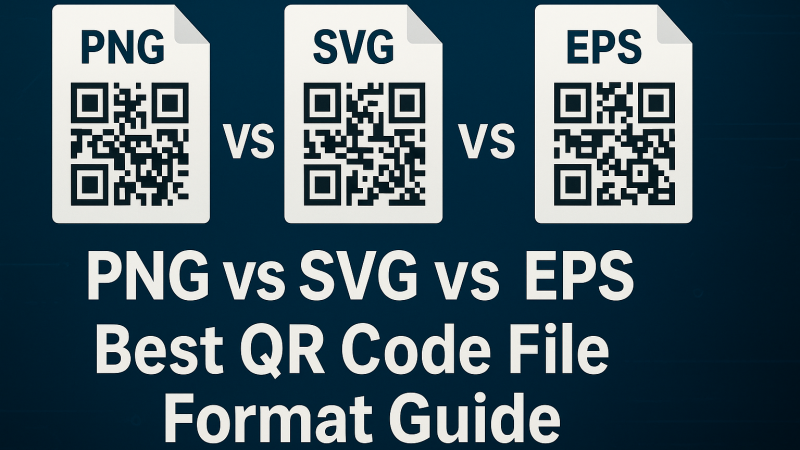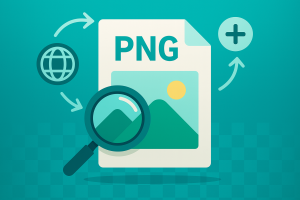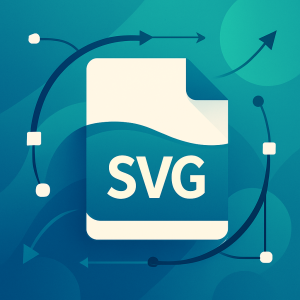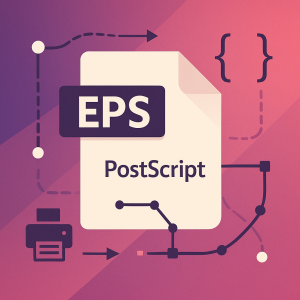PNG vs SVG vs EPS: Best QR Code File Format Guide

QR codes have transformed the way businesses interact with customers, facilitating seamless connectivity between physical and digital platforms. Selecting the appropriate file format — PNG, SVG, or EPS — is crucial to ensure optimal performance across various applications.
This guide offers an in-depth analysis of these three formats, enabling you to make an informed choice tailored to your specific needs.
Essential QR Code Quality Factors
- Resolution and clarity: QR codes must be clear and easily scannable.
- Scalability: The QR code should maintain quality irrespective of resizing.
- Compatibility: It must work effectively across both digital platforms and print materials.
Common Issues with QR Code Images
- Pixelation
- Blurred images
- Loss of quality upon resizing
- Difficulty in scanning due to improper file formats
File Formats Explained
PNG (Portable Network Graphics)
 Overview
Overview
PNG is a widely used raster graphics file format known for its lossless compression and transparency features, making it ideal for digital platforms.
Advantages of PNG for QR Codes
- Universal browser compatibility
- Support for transparent backgrounds
- Ease of use for web and digital media
Limitations
- Resolution-dependent; quality diminishes when resized significantly
- Less suitable for high-quality print applications
SVG (Scalable Vector Graphics)
 Overview
Overview
SVG is a vector-based graphics format designed specifically for web use, allowing infinite scalability without compromising image quality.
Advantages of SVG for QR Codes
- Excellent scalability
- Editable and customizable (colors, design)
- Small file sizes for quick loading
- Ideal for responsive web design
Limitations
- Limited support on some older browsers or email platforms
- Requires graphic editing knowledge for customization
EPS (Encapsulated PostScript)
 Overview
Overview
EPS is a vector-based file format traditionally used in professional printing, offering excellent image quality and scalability.
Advantages of EPS for QR Codes
- Ideal for professional and large-scale printing
- Lossless scaling to any size
- Widely accepted by commercial print shops
Limitations
- Not suitable for web applications
- Requires specialized software for editing
- Larger file sizes compared to SVG and PNG
Direct Comparison: PNG vs SVG vs EPS
Quality & Scalability
| Feature | PNG | SVG | EPS |
|---|---|---|---|
| Resolution Dependency | High (Raster) | None (Vector) | None (Vector) |
| Scalability | Limited | Excellent | Excellent |
| Print Quality | Moderate | Good | Excellent |
Compatibility & Ease of Use
| Feature | PNG | SVG | EPS |
|---|---|---|---|
| Web Compatibility | Excellent | Good | Poor |
| Accessibility | Easy | Moderate | Specialized |
| File Size | Moderate | Small | Moderate/Large |
Best Practices for Choosing the Right Format
- Web and Digital Marketing: PNG or SVG formats.
- Print Media (Brochures, Posters, Magazines): EPS or SVG formats.
- Product and Merchandise (Apparel, Packaging, Signage): EPS format.
Advanced Tips: Optimizing QR Code Images
- Choose high-contrast colors (e.g., black text on a white background).
- Compress PNG files using tools like TinyPNG.
- Optimize SVG files by code minimization.
- Customize QR codes with branding using SVG editing tools.
Selecting the appropriate QR code file format — PNG, SVG, or EPS — depends significantly on your application’s needs. For digital use, PNG and SVG are the optimal formats, while EPS is well-suited for professional printing purposes. By understanding the strengths and limitations of each format, you can maximize the effectiveness of your QR codes.
Frequently Asked Questions (FAQ)
- Can PNG QR codes be converted to SVG/EPS? Yes, but quality loss may occur.
- What’s the simplest way to edit an SVG QR code? Adobe Illustrator, Canva, or Inkscape.
- Why won’t my EPS QR code open correctly in some programs? Specialized software required (Adobe Illustrator, CorelDRAW).
- How do different formats affect QR code scanning performance? Image clarity and contrast primarily influence scanning performance, rather than file format.





